Mention cichlids and most people think of those attractive fish that come in a dazzling array of beautiful colors and patterns. These predominantly freshwater fish are popular for their appearance and aggressive personalities. Still, they are also known for being somewhat particular about their habitat, and by extension, their substrate.
While many different substrates on the market could potentially work for cichlids, not all of them are created equal. This article will explore some of the best substrates for cichlids and what makes them ideal for these popular aquarium fish.
Comparison Table of The 5 Best Substrate For Cichlids
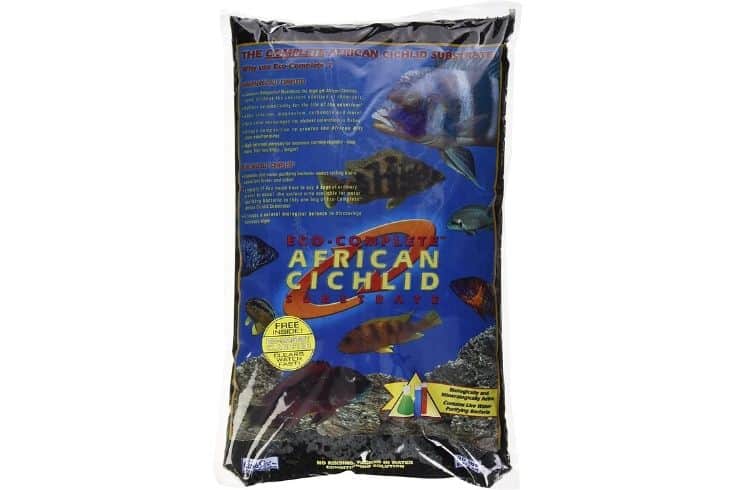
BRAND
Carib Sea Aquatics Eco-Complete African Cichlid Zack Sand, Black
DETAILS
- Brand: Carib Sea
- Liquid Volume: 10.16 Liters
- Target Species: Fish
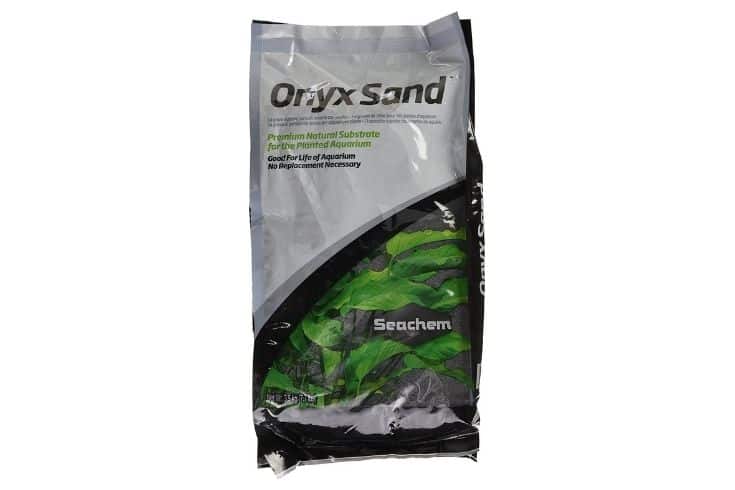
Seachem Fluorite Onyx Sand Substrate
- Brand: Seachem
- Liquid Volume: 15.4 Liters
- Item Weight: 15.65 Pounds
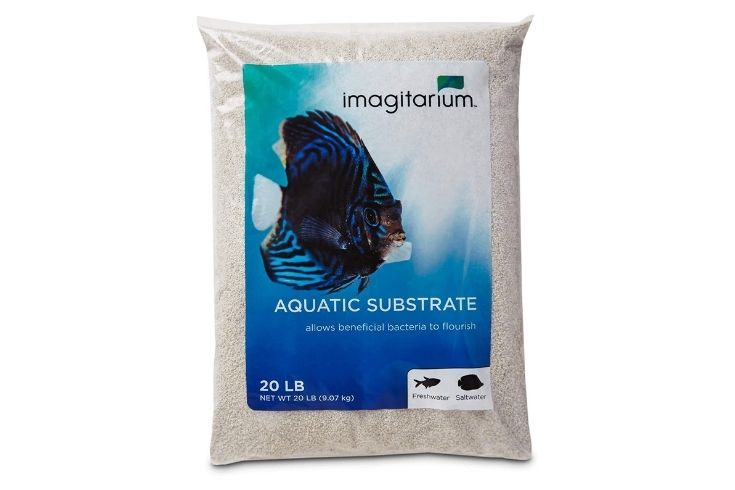
Imagitarium White Aquarium Sand
- Brand: Imagitarium
- Flavor: Seafood
- Item Form: Other
- Breed Recommendation: Small Breeds
- Item Weight: 20 Pounds
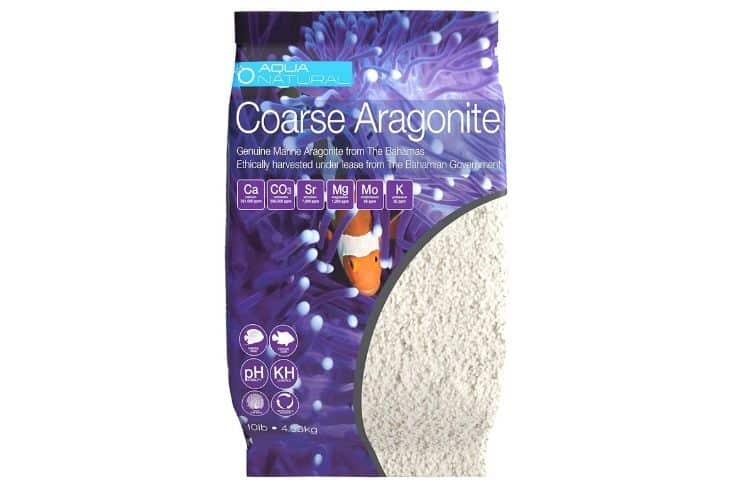
Coarse Aragonite 10lb Sand for Reef, Saltwater and Marine Aquariums
- Brand: AquaNatural
- Item Weight: 4.5 Kilograms
- Target Species: Fish
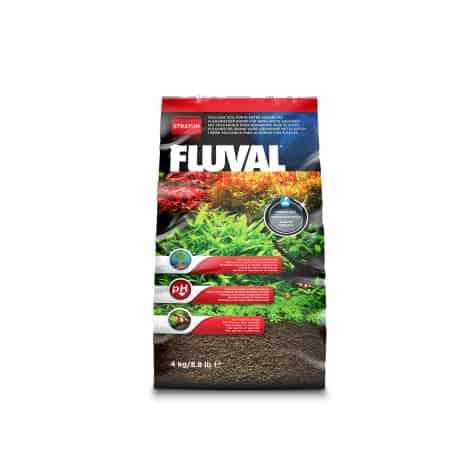
Fluval Plant and Shrimp Stratum
- Brand: Fluval
- Item Weight: 2.65 Kilograms
- Target Species: Plants and Fish
Why Do Cichlids Need A Substrate?
The substrate in an aquarium serves a few different purposes. First, it provides a place for beneficial waste-reducing bacteria to colonize and grow. These healthy bacteria are important for helping to break down nitrogenous waste in the aquarium and keeping water quality high. Cichlid species that live in brackish or saltwater habitats will also benefit from having marine bacteria present in their substrate.
The substrate also provides a place for plants to anchor themselves and grow. While not all cichlid species come from habitats with plant life, many do and will appreciate the presence of live plants in their aquarium. Plants help create a more natural environment for the aquarium fish and offer your cichlids places to hide and seek refuge when they feel stressed or threatened.
Finally, the substrate in an aquarium can also affect the pH and hardness of the water. This is why it’s important to choose a substrate that is compatible with the needs of your particular cichlid species.
What Makes A Good Cichlid Substrate?
Now that we know why it’s important to choose the right substrate for cichlids, let’s take a look at some of the qualities that make an excellent cichlid substrate:
Similarity To Natural Habitat
As mentioned earlier, cichlids are often particular about their environment and the substrate is no exception. Whether your cichlid originates from the Rift Lake, Lake Tanganyika, or Lake Malawi, it’s a good idea to try and recreate its natural habitat as closely as possible in your aquarium. This means paying attention to factors like the type of substrate, pH, hardness of the water, and the presence or absence of plants.
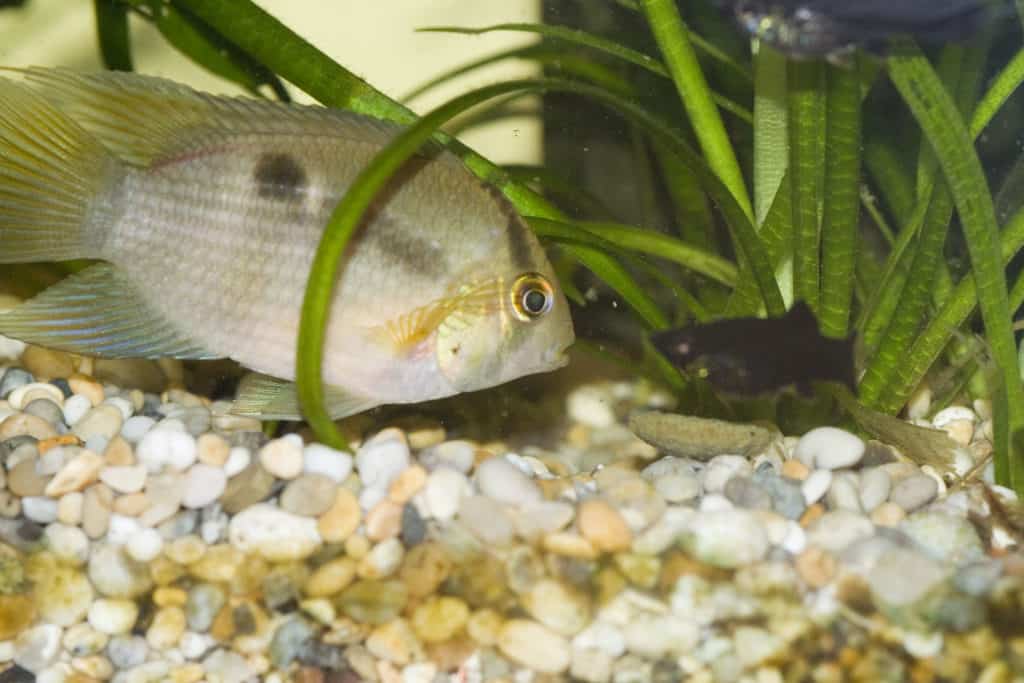
If you’re not sure what type of substrate is present in your cichlid’s natural habitat, try researching the needs of your specific cichlid species or asking a knowledgeable aquarium professional. For instance, African cichlid species from the Rift Lakes typically come from habitats with sandy substrates, while those from Lake Malawi prefer a more rocky substrate.
Whatever the case may be, try to choose a substrate that closely resembles the one found in your cichlid’s natural habitat. This will help make your cichlid feel more at home in its aquarium environment, allow beneficial bacteria to thrive, and encourage breeding behavior.
Substrate Grain Size
Cichlid fish keepers often debate the benefits of sand substrate vs. coarse substrate. On the one hand, larger grain sizes are less likely to be ingested by cichlids and can help to keep water quality high. They are also less likely to be kicked up into the water column, which can help to reduce stress and aggression levels in cichlid aquariums.
On the other hand, grain sand more closely resembles the natural habitats of many cichlid species and can offer these fish a place to bury themselves. Opting for a finer sand option would make sense if you plan on keeping species that spend a lot of time at the bottom of the aquarium, such as Synodontis catfish. Additionally, they also provide additional surface area for beneficial bacteria to colonize.
So, what’s the verdict? There is no perfect answer, and the best substrate for cichlids will ultimately depend on the needs of your particular cichlid species. The average grain size for cichlid substrates falls somewhere between 0.5 and 2.0 mm. This should provide ample surface area for bacteria to colonize while also being large enough to avoid being ingested by most cichlid species.
Buffering Capacity
Chemical buffers are important in maintaining a stable pH in aquariums. A substrate with a high buffering capacity or buffering levels will help to stabilize the pH of your aquarium water for an additional time relative to a substrate with low buffering levels. This is important for cichlids, as even a slight change in pH can be stressful for these fish.
Seasoned fish keepers are well aware that the ideal pH level for cichlids differs based on the species in question. For instance, substrates with a high calcium carbonate content are often used in cichlid aquariums because of their ability to buffer against a drop in pH. This makes them ideal for an African cichlid tank because African cichlids come from habitats with naturally high pH levels.
The substrate surface area can also affect its buffering capacity. A substrate with a large surface area will have more exposed sites for reactions to occur, which can help stabilize the pH of your aquarium water. Of course, these guidelines only apply to freshwater tanks. In marine aquariums, substrates with a high natural pH and high buffering capacity are often used to maintain the ideal water parameters for saltwater fish species.
Water Parameter Compatibility
We’ve touched briefly on this, but freshwater aquariums and saltwater aquariums have different water parameters. As a result, the substrates used in these two types of tanks will differ significantly. Saltwater fish and cichlids typically require alkaline water with hardness levels on the higher end of the spectrum. This is why coral sand is a substrate suitable for both cichlids that live in brackish water.
On the other hand, you’re more likely to find slightly acidic water in freshwater tanks. Many freshwater sources, such as tap water have a pH that is on the lower end of the spectrum. If your cichlids prefer high pH environments, you will need to look for a substrate that releases pH-raising substances into the water column. A good example of a natural product that does this is aragonite sand.
Aesthetic Appeal
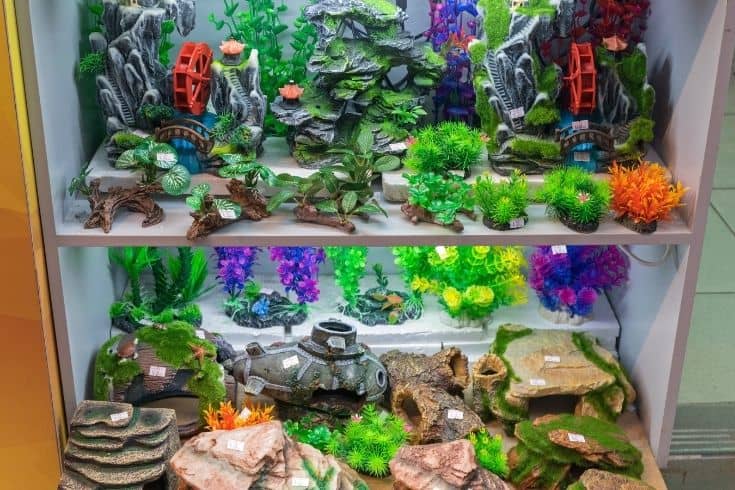
A cichlid tank has the potential to be one of the most gorgeous, colorful fish tanks imaginable. Cichlids come in a wide variety of brilliant colors, beautiful textures, and fascinating shapes, making for a stunning display. As a result, many hobbyists choose their cichlid substrates based on their compatibility with their pets’ natural colors.
Given the wide variety of colors cichlids come in, this can be challenging. Darker substrates such as black sand are popular choices as they allow the bright colors of cichlids to stand out. Others prefer lighter substrates because they believe it makes the tank appear more natural contrasted against colorful cichlids.
What looks best is a matter of personal preference. Whether you opt for white sands, onyx sand, or attempt to create a pearl beach with crushed coral, the important thing is that you’re happy with the results. As long as the cichlid substrate you choose is safe for your fish, the sky is the limit.
Best Substrate For Cichlids – Top Picks
1. Carib Sea Aquatics Eco-Complete African Cichlid Zack Sand, Black

- Brand: Fluval
- Item Weight: 2.65 Kilograms
- Target Species: Plants and Fish
Carib Sea describes the African Cichlid Zack Sand as mineralogically and biologically complete, and we can’t help but agree. Formulated with African Cichlids in mind, this substrate will buffer your water and help to maintain a high pH. It’s also packed with essential nutrients to nourish your plants and fish alike.
One thing we like about this substrate is that it’s been specifically designed to bring out the best in African cichlids. The black color of the sand substrate will make their colors pop, and the natural minerals will help keep them healthy and vibrant.
PROS
- mineralogically and biologically complete
- Buffers water and helps to maintain a high pH
- Black color brings out the best in African cichlids
CONS
- Gravel size is a little too large for smaller cichlids
2. Seachem Fluorite Onyx Sand Substrate

- Brand: Seachem
- Liquid Volume: 15.4 Liters
- Item Weight: 15.65 Pounds
Onyx Sand is yet another substrate that’s perfect for African cichlid tanks. It’s a little on the pricey side, but you definitely get what you pay for with this one. Packed with essential minerals and nutrients, this substrate will encourage plant growth and provide a natural buffer for your water.
The onyx color of the sand is stunning, and it brings out the best in cichlids. If you’re looking for a substrate that will make your tank look like a piece of art, this is for you.
PROS
- Encourages plant growth
- Natural buffer for your water
- Onyx color brings out the best in cichlids
CONS
- A bit pricey compared to some of its competitor
3. Imagitarium White Aquarium Sand

- Brand: Imagitarium
- Flavor: Seafood
- Item Form: Other
- Breed Recommendation: Small Breeds
- Item Weight: 20 Pounds
Imagitarium’s White Aquarium Sand is the perfect choice if you’re looking for a white color substrate that will make your cichlids pop. The white color is stunning against the bright colors of cichlids, and it’s also very natural-looking. Like most sand substrate, it provides a lot of space for your cichlids to dig and burrow, which they love.
This substrate is also very affordable, which is always a bonus. We should also mention that it’s been specifically designed not to cloud your water, so you won’t have to deal with any messy cleanup or harmful debris in the water. Nothing ruins a beautiful fish tank like cloudy water, so this is a big plus.
PROS
- White color really makes cichlids pop
- Provides space for your cichlids to dig and burrow
- Does not cloud your water
CONS
- May be too light for some darker colored cichlids
4. Coarse Aragonite 10lb Sand for Reef, Saltwater and Marine Aquariums

- Brand: AquaNatural
- Item Weight: 4.5 Kilograms
- Target Species: Fish
For the uninitiated, ground-up aragonite can be a bit of an acquired taste. But once you get used to it, this substrate is quite beautiful. The aragonite’s natural minerals help buffer your water and maintain a high pH, which is essential for African cichlids. It also encourages healthy plant growth, which is always a bonus.
One thing to keep in mind with this substrate, is that it’s a bit on the coarse side. This is a good thing for cichlids, as it provides them with plenty of space to dig and burrow. Just be sure to keep an eye on your fish to make sure they’re not ingesting any of the substrate.
PROS
- Buffers water and helps to maintain a high pH
- Encourages healthy plant growth
- Coarse texture provides plenty of space for cichlids to dig and burrow
CONS
- May be too coarse for fish that prefer something with a smooth texture
- Not ideal for plant growth – opt for plants that don’t require substrates
5. Fluval Plant and Shrimp Stratum

- Brand: Fluval
- Item Weight: 2.65 Kilograms
- Target Species: Plants and Fish
Though a little unconventional, as far as cichlid substrates go, Fluval’s Plant and Shrimp Stratum works well for African cichlid tanks. The porous nature of the substrate helps to encourage plant growth, and its non-compacting, uniform grain size creates a conducive environment for nitrifying bacteria to thrive.
One thing to note is that this substrate supports a neutral to slightly acidic environment, so you will have to use it in conjunction with other products if you want to maintain a high pH. But if you’re looking for a substrate specifically designed to encourage plant growth, this is the one for you.
PROS
- Encourages plant growth
- Uniform grain size creates a conducive environment for nitrifying bacteria
- Porous nature helps to keep water clean and clear
CONS
- Supports a neutral to slightly acidic environment
- May be too light for some darker colored cichlids
FAQs
Why Do Cichlids Dig In Sand?
Cichlids are known for their love of digging, and they will often burrow into the substrate to create a territory of their own. They may also do this to look for food, as many cichlid species are bottom-feeders. Whatever the reason, cichlids seem to enjoy playing in the sand!
How Much Substrate Do I Need For My Cichlid Tank?

The amount of substrate you’ll need for your cichlid tank depends on your tank’s size and the substrate layer’s depth. A good rule of thumb is to use 1-2 pounds of substrate per gallon of tank capacity. So, for a 50-gallon cichlid tank, you would need 50-100 pounds of substrate.
Can I Use Play Sand for African Cichlids?
The short answer is yes, you can use play sand for African cichlids. However, it’s important to note that not all play sands are created equal. Some play sands may contain high levels of heavy metals or other harmful substances that could be toxic to your fish. For this reason, it’s always best to do your research and purchase high-quality play sand that has been designed specifically for aquariums.
Final Thoughts
perfect for African cichlid tanks. It really just comes down to finding the one that best suits your needs. Do you want something that’s specifically designed to encourage plant growth? Or are you more concerned with finding a substrate that will help maintain a high pH?
Whatever your priorities, we’re confident that you’ll be able to find a substrate on this list that’s perfect for your African cichlid tank.
We hope you enjoyed this article. If you have any questions or comments, please feel free to reach out to us. And be sure to check out our other articles on all things cichlids!
